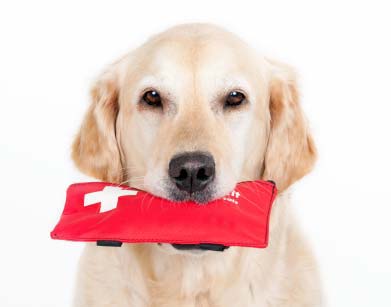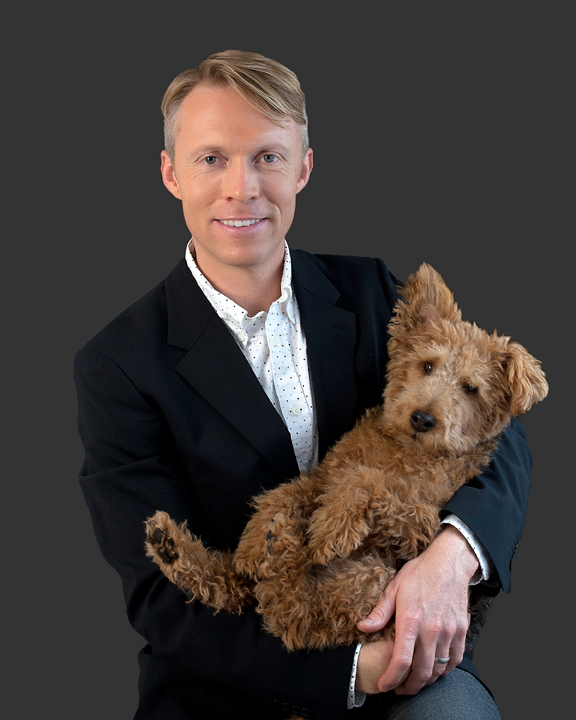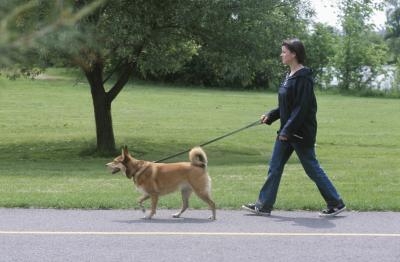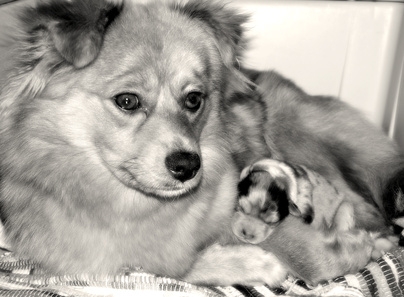Perfection in free heeling is achieved through leash training. Study your dog's natural movements and select a speed suitable to the dog. The heeling exercises will then be a normal procedure, based on the dog's physical and mental characteristics.
If you have not already done so, get into the habit of starting the heeling action with your left foot. In the Novice work, it didn't matter which foot you started on, because the Novice exhibitor normally uses the heeling command. Then too, when working with a large untrained dog, the trainer has better balance when he starts on the right foot. For the advanced training, teach your dog that when your right foot moves, it means to stay. When your left foot steps forward, it means to follow.
A common mistake made by amateur trainers is to jerk the leash when they step forward at the start of the heeling exercise. This timing is incorrect! There should be no hand movement, only the verbal command, such as "Robin, Heel!" which is given before the foot moves. The leash is jerked after the trainer starts, while the foot is coming down on the first step, and while the trainer is giving praise. A gentle patting of the side follows every jerk of the leash.
The majority of dogs perform with accuracy when the leash is on but will take advantage on the heel free. To overcome this independent attitude, surprise your dog by using the leash when she doesn't expect it. During the heeling routine, turn sharply at short intervals and catch her off guard. After you turn, tug on the leash forcefully, using a minimum of hand motion but with exaggerated praise. Do this two or three times, then make the turns without jerking the leash but give praise just the same. If the leash is used continuously, your dog will heel wider than ever, or will heel close through fear.
Practice about-turns from a standstill. As you pivot, reach back with your right foot and tap the dog lightly on the right flank. Bring your feet together, reach down and pat her immediately. The dog must think the foot correction was unintentional. But you accomplished your purpose by making her turn.
Make one complete circle to the right, first while in motion, and again from a stand. Circling keeps a dog alert and watchful of movements. If it is a big dog you are training, reach back with your right hand when you make an about-turn, and "spank" the dog playfully on the rear. When she looks around in surprise, clap your hands in front of your body and coax her to come close at heel.
Encouraging your dog to remain at heel position through cleverly disguised tricks is a better method of training than jerking the collar repeatedly. Your dog will remember better for longer if the training is more spontaneous and lively. Also, training this way is more enjoyable for you as it stretches you to develop a better relationship with your dog.

 Dangerous Foods for Dogs
It’s only natural for dogs to
Dangerous Foods for Dogs
It’s only natural for dogs to
 Cancer in Dogs
Dr. Patrick Mahaney is a veterinari
Cancer in Dogs
Dr. Patrick Mahaney is a veterinari
 Dog Paw Irritation From Concrete
Dog Paw Irritation From Concrete
Dog P
Dog Paw Irritation From Concrete
Dog Paw Irritation From Concrete
Dog P
 How to Know If a Dog Is Going to Have Puppies
How to Know If a Dog Is Going to Have Puppies
How to Know If a Dog Is Going to Have Puppies
How to Know If a Dog Is Going to Have Puppies
 Warning! Water Hemlock Kills Dog in an Hour
A 3-year-old Border Collie mix rece
Warning! Water Hemlock Kills Dog in an Hour
A 3-year-old Border Collie mix rece